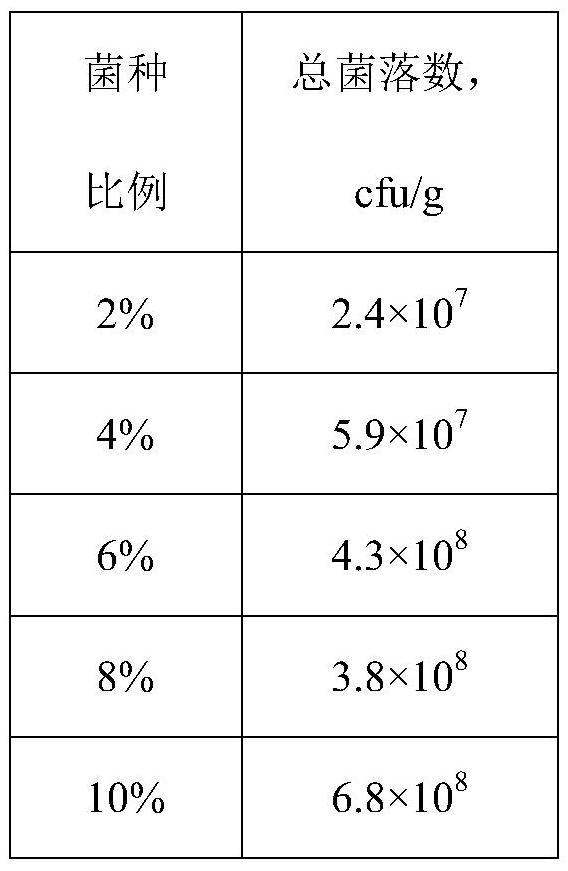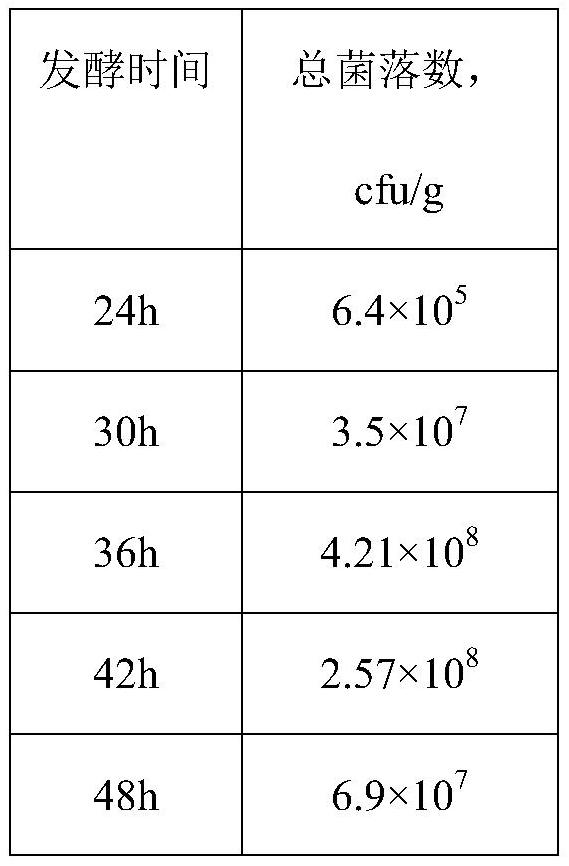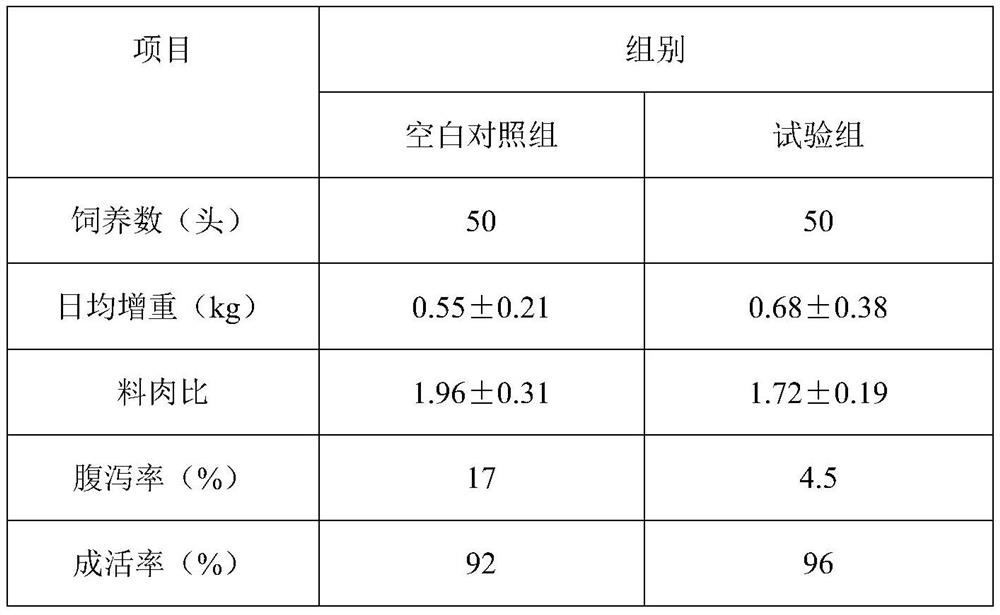Method for preparing feed probiotic agent from rice flour wastewater and passion fruit peel by lactic acid bacteria
A technology of passion fruit peel and lactic acid bacteria, applied in the direction of bacteria, etc., can solve problems such as probiotics that have not yet appeared, and achieve the effects of enhancing animal immunity, facilitating absorption, and realizing reuse.
- Summary
- Abstract
- Description
- Claims
- Application Information
AI Technical Summary
Problems solved by technology
Method used
Image
Examples
Embodiment 1
[0024] In this example, the inoculation ratio of lactic acid bacteria was investigated, and the fermentation experiment was carried out in the culture medium inserted into rice flour wastewater and passion fruit peel according to different (W / W) inoculation amounts, and the fermentation time was 24-36h. The inoculation ratios were 2%, 4%, 6%, 8%, and 10%, respectively, and the total colony count of the fermentation product was measured. The results are shown in Table 1. Known from Table 1, the optimum seed solution ratio is 6%.
[0025] Table 1 Effects of different strain ratios on the physical and chemical indicators of fermentation products
[0026]
Embodiment 2
[0028] In the present invention, the fermentation time is investigated, and the liquid seed solution with a lactic acid bacteria inoculation ratio of 6% is inserted into the liquid medium of rice flour wastewater and passion fruit peel, and the fermentation temperature is 37°C, as shown in Table 2 below.
[0029] Table 2 Effects of different fermentation times on the physical and chemical indicators of fermentation products
[0030]
Embodiment 3
[0032] The present invention investigates the feeding of probiotics in piglets. Add the lactic acid bacteria into the liquid culture medium of rice flour wastewater and passion fruit peel according to the inoculation amount of 6% (W / W), ferment the temperature at 37° C., and ferment for 36 hours to obtain the probiotics for feeding. Common pig feed is used as a blank control group, and the fermented feed of the present invention is used as a test group for testing. The piglets had free access to food and were fed for 1 month. The feeding results are shown in Table 3.
[0033] Table 3 The impact of animal feed of the present invention on weaned piglets
[0034]
[0035] As can be seen from Table 3: compared with the blank control group, the daily gain of weaned piglets in the test group fed the feed of the present invention increased by 23.63%, the feed-to-meat ratio decreased by 12.24%, the diarrhea rate decreased by 73.5%, and the survival rate increased by 4.34%.
PUM
 Login to View More
Login to View More Abstract
Description
Claims
Application Information
 Login to View More
Login to View More - R&D
- Intellectual Property
- Life Sciences
- Materials
- Tech Scout
- Unparalleled Data Quality
- Higher Quality Content
- 60% Fewer Hallucinations
Browse by: Latest US Patents, China's latest patents, Technical Efficacy Thesaurus, Application Domain, Technology Topic, Popular Technical Reports.
© 2025 PatSnap. All rights reserved.Legal|Privacy policy|Modern Slavery Act Transparency Statement|Sitemap|About US| Contact US: help@patsnap.com



